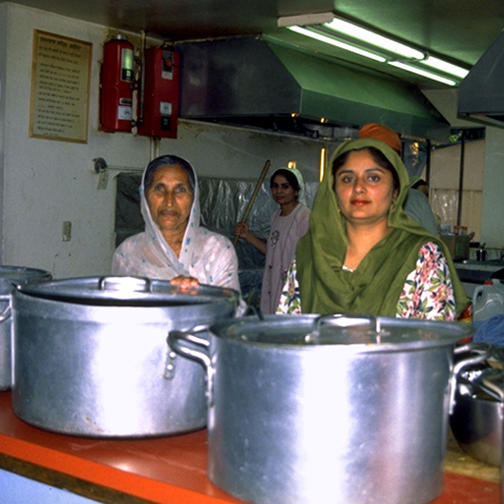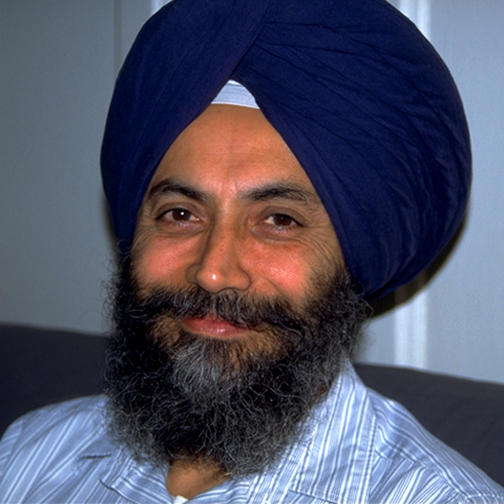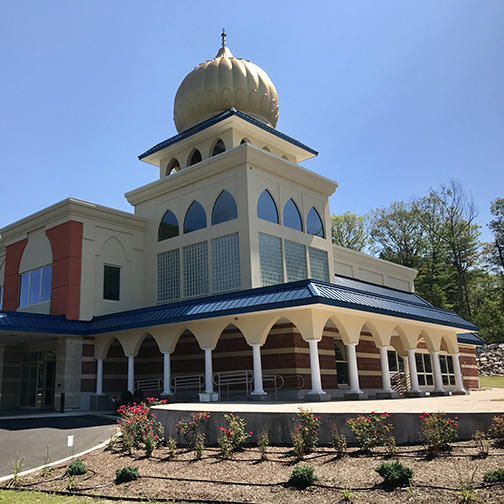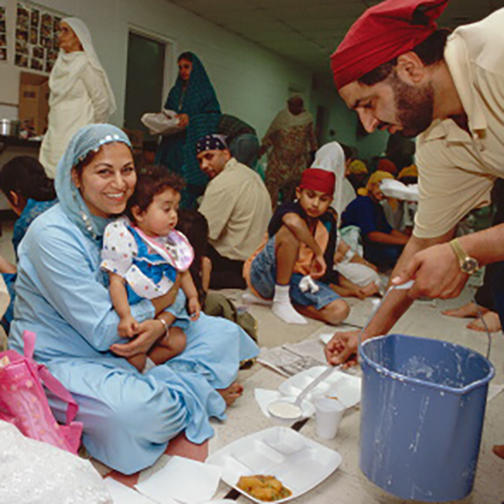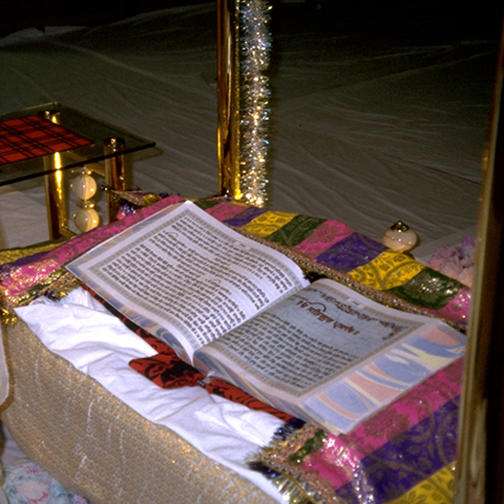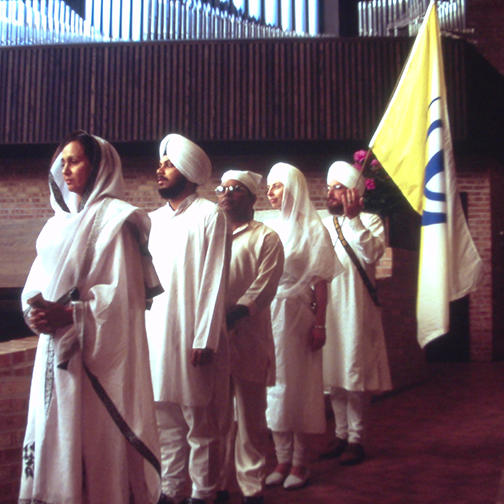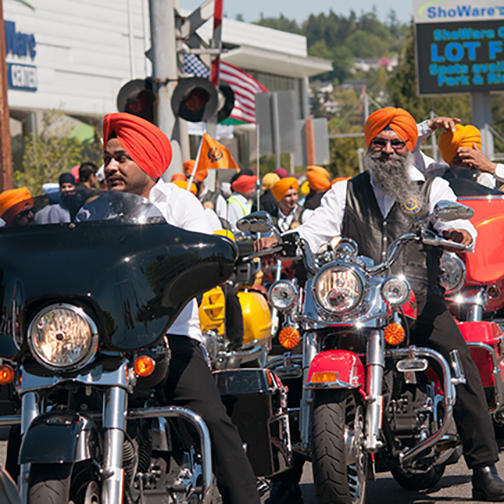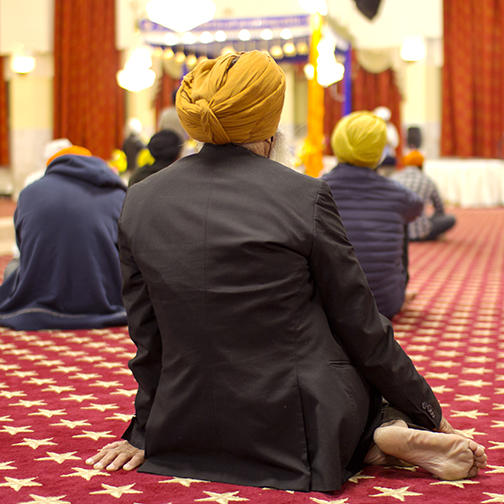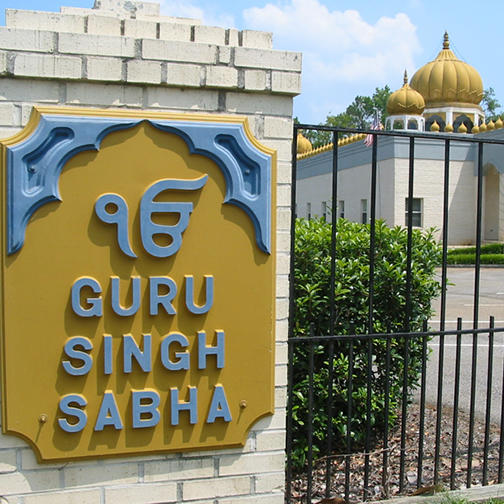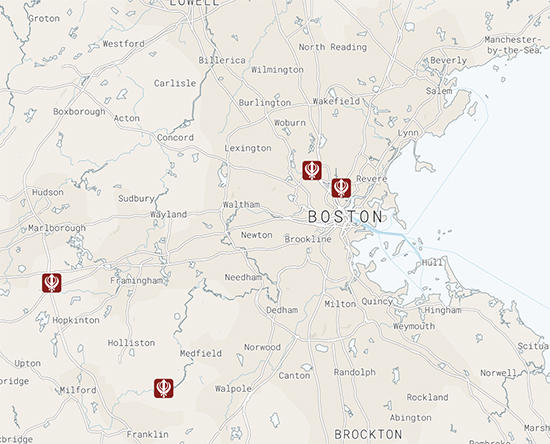Sikhism
Sikhism
Sikhism
Essays
Sikhism Timeline
Sikhism in the World (text)
1469 CE Birth of Guru Nanak
Guru Nanak, the first Guru (prophet-teacher) of what would become the Sikh tradition, is born in the village of Talwandi in what today is Pakistan. After a Divine revelation he leaves his home accompanied by Mardana, a Muslim musician, to spread his message.
1539 CE Succession of Guru Angad
Guru selects as his successor not one of his own sons but a devout disciple whom he names Angad, “My Limb.”
1552 CE Guru Amar Das
The third Sikh Guru was a strong social organizer and social reformer. It is said that the Emperor Akbar came to visit him and was asked to sit and eat langar with others, high and low, before he met with the Guru. Amar Das established twenty-two manjis, “dioceses,” each under the supervision of designated spiritual leaders, some of whom were women.
1574 CE Guru Ram Das Founds Amritsar
The fourth Guru, Guru Ram Das, establishes the town of Ramdaspur (now known as Amritsar) in the Punjab. At the city’s center is the Lake of Nectar, a holy site and meeting place for the Sikhs.
1581 CE Guru Arjan Builds the Darbar Sahib
The fifth Guru, Guru Arjan, completes the Darbar Sahib, the great gurdwara at Amritsar, which becomes known as the Golden Temple because of its gilded dome.
1604 The Sikh Scripture Assembled
Guru Arjan compiles the first version of what would be named the Guru Granth Sahib, the Sikh scripture, and places it in the Darbar Sahib.
1606 CE Guru Hargobind
During the reign of Guru Hargobind, the “two-sword” theory of Sikh leadership is developed: one sword for religious authority and one for temporal authority.
1606 CE Akal Takhat: The Throne of the Almighty
The temporal role of the Guru is symbolized by the seat called “The Throne of the Almighty” where decisions are made. The Sikhs establish their own royal court, similar to the Mughal court of the time, with the Guru as the royal and spiritual head.
1644 CE Guru Har Rai
The seventh Guru, Har Rai is known for his support of the liberal Mughal Prince Dara Shikoh against his brother Aurangzeb.
1661 CE Guru Har Krishan
Guru Har Rai decides to pass the Guruship over his eldest son, Ram Rai, because he misinterpreted the meaning of one of Guru Nanek’s hymns. Ram Rai then becomes a power pawn of Aurangzeb (who is now Mughal Emperor) in his challenges to the Sikhs.
1664 CE Guru Tegh Bahadur
Tegh Bahadur becomes the ninth guru in 1664, but is beheaded by Emperor Aurangzeb in 1675.
1675 CE Guru Gobind Singh
Gobind Singh becomes the tenth Guru at the age of nine and reigns for thirty-three years, during which he focuses on communication.
1699 CE Creation of the Khalsa
Guru Gobind Singh creates the Khalsa, bestowing a distinct identity to the Sikhs. All Sikhs are expected to join the Khalsa by a special initiation and to wear five symbols that identify them as Sikhs: a sword, a specific kind of undergarment, a hair-comb, a steel bracelet, and uncut hair.
1708 CE Guruship Passes to the Guru Granth Sahib and the Khalsa Panth
Guru Gobind Singh is attacked by assailants in 1708. Before passing away, he gives the authority of the Sikhs to Guru Granth Sahib (the Sikh scripture) and the Guru Khalsa Panth (the collectivity of the Sikh community). He decides that Sikhs would no longer have an individual Guru.
1799 CE Ranjit Singh Rules in Punjab
Ranjit Singh, a young and brilliant leader, gains power in Lahore and consolidates the twelve Sikh confederacies into one Sikh kingdom in the Punjab.
1849 CE The Annexation of the Punjab
After several wars (collectively known as the Anglo-Sikh Wars) and inter-Sikh rivalries, the Sikhs lose control of the Sikh kingdom and the Punjab is annexed to British India.
1783-1854 CE Baba Dayal and the Nirankaris
Baba Dayal (1783 – 1854) creates a movement to restore the orthodoxy of the early Sikh community by not only relishing the words the Guru’s hymns, but heeding to their true meaning.
1816-1884 CE Baba Ram Singh and the Namdharis
Ram Singh is a social reformer who seeks to eliminate non-Sikh practices such as purdah, child marriage, and dowry from the Sikh community. He and his followers, the Namdharis, also fight vigorously against British control of India.
1892 CE Khalsa College founded in Amritsar
This college is the first effort to combine traditional Sikh education and Western education.
1919 CE Amritsar Massacre
A protest gathering, including a large number of Sikhs, takes place in the walled court of Jallianwala Bagh in Amritsar. The crowd is sprayed with rifle fire by order of British General Dyer, and as many as 1,500 individuals die.
1920 CE Shiromani Gurdwara Prabandhak Committee
The Supreme Gurdwara Management Committee (SGPC) is created by the Sikh authorities in Amritsar to manage all gurdwaras. During the same year the Sikh political party Akali Dal is formed.
1921 CE Nankana Massacre (the Jallianwala Bagh massacre)
Worried that SGPC or Akali leaders would take control of his gurdwara, the local leader of the Nankana gurdwara orders his guards to open fire on a group of Akali visitors. After news of the massacre spreads, the local government concedes that the Akali leaders could control the gurdwara, but tensions between the government and the Sikh community continue.
1925 CE Sikh Gurdwaras Act
This act of the British colonial government, through the Punjab legislative council, approves the SGPC and puts gurdwaras under their care.
1947 CE India Is Divided
Millions of Sikhs are displaced during the partition of India into India and Pakistan, which sliced through the Punjab. Among the most painful losses for the Sikhs are the gurdwaras left behind, which include Nankana Sahib, the birthplace of Guru Nanak. Thousands of Punjabis are killed, fleeing in both directions.
1950 CE Sikhs and the Indian Constitution
The Akali Dal, the main Sikh political party, refuses to sign the new Indian constitution, arguing that the distinctiveness of the Sikh tradition is not recognized and their demand for a Punjabi-speaking state has not been included.
1966 CE Punjab a Sikh Majority State
The Indian Parliament and Prime Minister Indira Gandhi accept the demand for a Sikh majority state in the Punjab, and the old Punjab is divided into Punjab and Haryana.
1973 CE Anandpur Sahib Resolution
This resolution, adopted by the Akali Dal, seeks greater autonomy for the Punjab but firmly renounces separatism.
1984 CE Indian Army Attacks the Golden Temple
In 1984, on the pretext of flushing out militant separatists, the Indian Army attacks the Golden Temple on the martyrdom anniversary of the temple’s constructor, the fifth Guru Arjan. Over a period of 8 days, the Indian Army attacks thirty-eight shrines across northern India, which some estimate to have killed thousands of Sikh pilgrims.
1984 CE Indira Gandhi Assassinated
A few months after the attack at the Golden Temple, Prime Minister Indira Gandhi is assassinated by two of her Sikh bodyguards in retaliation for ordering the attack. Anti-Sikh riots followed, leading to the massacre of several thousand Sikhs in Delhi and other cities of India.
1993 CE Sikhs Meet at the Parliament of the World’s Religions in Chicago
More than twenty-five Sikhs from around the world are invited by the Sikh Host Committee to attend the Parliament of the World’s Religions in Chicago.
2004 First Annual Sikh Film Festival Held at Hofstra University
SONY, in conjunction with the International Punjabi Society and Hofstra University, hosts the first annual Sikh Film Festival, the success of which leads to the creation of the Sikh Art & Film Foundation in 2006.
2010 U.S. President Bypasses Golden Temple, Generates Criticism
Just before his trip to India in November 2010, news breaks that U.S. President Barack Obama’s itinerary will not include a stop at the Golden Temple in Amritsar as previously planned. The President, then mired in accusations at home that he might be Muslim, declines to cover his head as is required within the Sikh tradition when entering a holy place, irking many who felt such a move further promoted ignorance about and intolerance of both Sikhs and Muslims.
2012 Sikhs Petition American President
Over 40,000 Sikhs petition American President Barack Obama to recognize the 1984 mass murder of Sikhs as a genocide, but the administration tables the petition.
2017 Jagmeet Singh Elected
Jagmeet Singh becomes the first non-white leader of a major political party, the New Democratic Party, in Canada.
Sikhism in America (text)
1903 CE South Asian Immigration to North America Begins
In 1903, twenty South Asians immigrate to North America. The vast majority of immigrants from India in this period are Sikhs from the Punjab.
1905 CE Sikh Workers on the Railroad
Sikhs work on the Western Pacific Railway in Northern California and are responsible for the construction of many bridges and tunnels.
1907 CE Bellingham “Anti-Hindu” Riot
A mob of around 500 white lumberjacks attack 250 Sikh mill workers in Bellingham, Washington, beating them and burning their belongings. Some Sikhs flee into Canada, where 400 are arrested.
1907 – 1910 CE Immigration through San Francisco
Though immigration of Indians was not illegal, immigration officials scrutinized immigrants carefully, rejecting many on medical grounds. In 1910, 1,403 Indians entered the U.S. through San Francisco.
1910 – 1920 CE Sikh Farmers Settle in California
The Punjabi immigrants, most of them Sikh but some Muslim, settle in the San Joachin Valley in Central California and the Imperial Valley in Southern California. Beginning as farm workers, some become successful enough to lease and then buy land.
1912 CE Khalsa Diwan Society
The Pacific Coast Khalsa Diwan Society is established in Stockton, California to provide support for Indians facing discrimination in the U.S. and for those seeking to end British rule in India.
1912 CE The First Gurdwara built in the United States
In 1912, the first gurdwara in the United States is established in Stockton, California. For over three decades, it remains the only Sikh worship facility in the U.S.
1913 CE Alien Land Law Passed
The California legislature passes the Alien Land Law, barring those ineligible for citizenship from leasing or owning land in California. After the 1923 Thind decision by the U.S. Supreme Court, which established Indians or “Hindus,” as ineligible for citizenship, the Alien Land Law threatens the livelihood of many Sikh farmers.
1913 – 1918 CE The Ghadar Party and Indian Freedom
The Ghadar Party, a movement of Indians in California seeking to overthrow British rule of India, becomes an international phenomenon as a few California Sikhs return to India in hopes of an armed revolutionary uprising. The Ghadar Party’s activities lead to the San Francisco “Hindu Conspiracy” trial in 1917-18.
1917 CE Immigration Act of 1917
Congress passes the Immigration Act of 1917, called the “Barred Zone Act,” which prohibits immigration from certain areas, including India. Legal immigration comes virtually to a halt for thirty years.
1918 Hindustani Welfare and Reform Society
Co-founded by Asa Singh (a Sikh), Fazil Din (a Muslim), and Ram Chand (a Hindu), this organization offers mutual aid to farmers in the Imperial Valley of California.
1920s CE Sikhs in the Imperial Valley
By 1920, Sikhs lease more than 32,000 acres in Southern California’s Imperial Valley. Unable to bring wives from India, many choose to marry Mexican wives, thereby creating a distinctive Mexican-Sikh community.
1923 CE Bhagat Singh Thind Denied Citizenship
Bhagat Singh Thind comes to the United States in 1912 and serves in the U.S. Army during World War I. Although Thind was a naturalized citizen, his citizenship was revoked by the provisions of the Immigration Act of 1917. In 1923, the U.S. Supreme Court upholds the recision of his citizenship.
1938 CE India League of America Established
Jagjit Singh becomes president of the newly formed India League of America, through which Sikhs fight for restoration of their right to U.S. citizenship.
1946 CE Congress Passes Immigration Quota Bill
The exclusion of Indians since the Immigration Act of 1917 ends on July 2, 1946 with the passage of the Luce-Celler Bill, granting natives of India the right to American citizenship and an annual naturalization quota of one hundred. This act is passed largely through the efforts of Jagjit Singh and Anup Singh of the India League of America. The quota is so small that it did does appreciably increase the Sikh community, but it helps to rebuild Sikh family life.
1948 CE Gurdwara Opens in El Centro, California
Imperial Valley Sikhs had worshipped in homes for decades until purchasing the Japanese Buddhist Temple in El Centro in 1947, since few Japanese returned to El Centro after release from detention camps. In 1948, they open the US’ second gurdwara.
1956 CE First Sikh Elected to Congress
Dalip Singh Saund, a farmer with a doctorate in mathematics, becomes the first Asian American to be elected to the U.S. Congress.
1965 CE New Sikh Immigrants
The Immigration Act of 1965 causes the Sikh community to increase fourfold in the coming decade.
1966 – 1969 CE New Gurdwaras for America
In many cities, Sikhs begin meeting in each other’s homes, renting space for festivals and programs, and finding an appropriate building or site for a gurdwara. The Sikh Study Circle in Los Angeles, the Sikh Center of San Francisco Bay Area, and the New England Sikh Study Circle are all founded this way.
1967 CE Sikh Foundation of Palo Alto California
The Sikh Foundation in Palo Alto California is created to disseminate knowledge about Sikh history and culture through television shows, radio interviews, and book printing.
1968 CE Yogi Bhajan Comes to America
Harbhajan Singh comes to the U.S. and attracts American followers with Sikh teachings and yoga classes. He creates the Sikh Dharma Brotherhood in Los Angeles in 1968. The movement, known also as 3HO (Healthy, Happy, Holy Organization), has over 120 yoga and meditation centers throughout the world.
1969 CE Richmond Hill Gurdwara
Sikhs who had been meeting in homes and rented sites since 1963 purchase a former Methodist church building in the Richmond Hill section of Queens in New York City, which they convert to a gurdwara that opens in 1972.
1969 CE First Gurdwara in Los Angeles
To celebrate the 500th birthday of Guru Nanak in 1969, the Sikh Study Circle opens the doors of Los Angeles’ first gurdwara on North Vermont Avenue.
1970 CE Expansion of American Sikh Community
The decade of the 1970s brings a dramatic increase in Indian immigration. The San Francisco Sikh community opens its first center and new gurdwaras are opened in Yuba City and Live Oak.
1973 CE Hindu-Jain-Sikh Temple
The Indian community of Pittsburgh shares space and the planning for a new temple for Hindu, Jain, and Sikh practitioners in Monroeville, Pennsylvania. By 1981, the Sikh community has grown substantially and opens its own gurdwara, the first in Pittsburgh.
1978 CE The Sikh Council of North America
The Sikh Council of North America is founded as a religious and socio-cultural organization to research Sikhism and to inspire interest among Sikh youth in Sikhism. Until it’s dissolution in the mid-1980s, it holds a yearly conference in different parts of the United States at which each gurdwara is represented by at least one delegate.
1979 CE First Sikh Parade, Yuba City
The first annual Sikh Parade in Yuba City commemorates Guru Gobind Singh’s enthronement of Guru Granth Sahib. Punjabi dress, full beards, turbans, and swords mark this public show of Sikh pride.
1980s CE New Gurdwaras
The Sikh population builds new gurdwaras in cities throughout the U.S., spreading in the New York and California areas and beyond. In this decade, new gurdwaras are opened in Chicago (1980); Seattle (1982); Oklahoma City (1983); North Carolina (1984); Long Island (1985); Bridgewater, New Jersey (1986); Glen Rock, New Jersey (1988); and suburban Boston (1990).
1980 CE Peace Prayer Day
Yogi Bhajan continues his work with non-Punjabi Sikhs by establishing Peace Prayer Day in the mountains of New Mexico where people from many different religious traditions gather to pray for peace.
1984 CE Attack on the Golden Temple
In India, troops attack the Golden Temple in an attempt to rout a group of separatists, killing hundreds or possibly thousands of Sikh civilians. This attack begins a wave of anti-government sentiment among Sikhs in India and abroad. Sikhs in the U.S. are outraged and protest publicly.
1984 CE The World Sikh Organization
Founded in New York, the World Sikh Organization is established in the wake of the massacre in India. It is concerned with the social, political, religious and human rights of Sikhs and marks the increasing visibility of Sikhs in the United States.
1985 – 1990 CE University Conferences on Sikhism
By the mid-1980s, there are more than 150,000 Sikhs in the United States. Conferences co-sponsored by the Sikh community and major universities are held at the University of Michigan (1986), the University of Toronto (1987), and Columbia University (1989).
1987 CE Kirpan Case in New York
The kirpan, or short sword, must be worn by all initiated Sikhs. Partap Singh of New York is arrested for traveling by subway in New York while wearing the kirpan. The court dismisses the case after learning that wearing the kirpan is a religious practice.
1988 CE First Sikh Day Parade, New York
Held in April near the time of Baisakhi, the parade includes the Khalsa in full dress, Panj Piaras, and floats—one of them bearing the Guru Granth Sahib.
1990s CE Stabilization of Sikh Population
As the U.S. Sikh population continues to spread out geographically, gurdwaras open in New Orleans (1990), Orange County (1991) and Atlanta (1991). Sikhs continue to find ways to strengthen their cultural and religious traditions and to transmit them to their children.
1990 – 1991 CE Sikhs Harassed During Gulf War
Sikhs, with their turbans and beards, are sometimes mistaken for Muslims by Americans, leading to vandalism of some Sikh gurdwaras.
1994 CE Court Permits Kirpan in School
A school district in Livingston, California prohibits three Sikh children from wearing the kirpan to school because of a ruling barring the possession of knives. The U.S. Court of Appeals rules that the children can wear the kirpan.
1995 CE California School System Teaches Punjabi
Yuba City High School and Live Oak High School implement Punjabi language programs due to the efforts of Sikhs in the area.
1996 CE Sikh Mediawatch and Resource Task Force (SMART) Founded
The Sikh Mediawatch and Resource Task Force is founded to meet the needs of the growing Sikh community through media analysis and education. In 2004, SMART changed its name to the Sikh American Legal Defense and Education Fund (SALDEF) and, as of 2019, is the oldest Sikh civil rights and education organization in the United States.
2001 CE Sikhs Experience Backlash After September 11th
On September 15th, 2001, Balbir Singh Sodhi, a Sikh immigrant from the Punjab is shot and killed outside of a gas station in Mesa, Arizona. Sodhi was one of many turban-wearing Sikh men and boys who were targeted after September 11, 2001. On the evening of September 11th, the Sikh community in New York City began organizing in response to the attack on three Sikhs in Queens; their efforts resulted in the formation of the Sikh Coalition, a civil and human rights advocacy organization.
2001 CE Passage of Senate Resolution Condemning Hate Crimes Against Sikh-Americans
On October 18, 2001, the Senate unanimously passes a Resolution on Hate Crimes Against Sikh-Americans to condemn and intend to prevent hate crimes against Sikhs, particularly in the wake of the terrorist attacks of 9/11.
2004 CE NYPD Accommodates Sikh Articles of Faith
The New York Police Department (NYPD) allow Sikhs them to serve as Transportation Enforcement Agents for the NYPD with articles of faith (i.e. turbans and uncut hair and beards), settling a lawsuit against the police force for discrimination.
2007 CE Federal Protective Service Accommodates Sikh Articles of Faith
The Federal Protective Service allows Sikhs to serve as federal security guards with their articles of faith intact.
2007 CE TSA Mandates Further Screening for Sikh Turbans
The Transportation Security Administration (TSA) mandates that Sikh turbans will be subject to additional security screening, including possible removal and/or pat-down of the turban at security checkpoints.
2009 CE First Sikhs Enlist in the U.S. Army in Decades
Captains Kamaljeet Singh Kalsi and Tejdeep Singh Rattan, an emergency medicine doctor and a dentist respectively, become the first Sikhs to enlist in the U.S. Army in decades due to a ban on “conspicuous” religious articles implemented in the early 1980s.
2012 CE First Major City Voluntarily Allows Sikh Police Officers to Keep Articles of Faith
Washington, D.C., the seventh largest police force in the nation, voluntarily allows Sikh police officers to keep their articles of faith, including beards and turbans.
2012 CE NYC Transit Authority Lifts Religious Headwear Logo Requirement
The Metropolitan Transit Authority (MTA) of New York City lifts the requirement that religious headwear bear the governmental authority’s logo, settling a federal lawsuit on the basis that the logo requirement was a violation of civil rights. The adopted policy requires that all religious headwear be blue to match the MTA uniforms.
2012 CE Six Sikhs Killed Inside a Gurdwara in Oak Creek, Wisconsin
On Sunday, August 6th, six Sikh worshippers are murdered by a man with ties to white supremacist groups during morning activities at a gurdwara in Oak Creek, Wisconsin.In the weeks and months that followed, thousands of Sikhs and non-Sikhs alike gather in gurdwaras, churches, and community centers around the nation to remember the slain and to stand up against intolerance.
2018 First Sikh Attorney General
Gurbir Grewal is appointed New Jersey Attorney General, becoming the first Sikh-American Attorney General in the US.
Selected Publications & Links
Explore Sikhism in Greater Boston
Sikhism is currently the world’s fifth-largest religion, and while most Sikhs still reside in South Asia, the Sikh population in the United States has grown considerably since the passage of the Immigration and Nationality Act in 1965. In Boston, Sikhs first met as a small study circle in the late 1960s, but the community has expanded dramatically over the past few decades, and continues to grow. Today, there are four established gurdwaras (temples) serving several hundred families in Greater Boston.
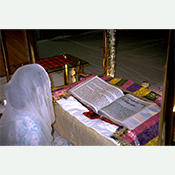
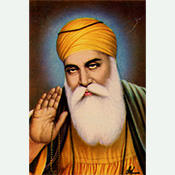

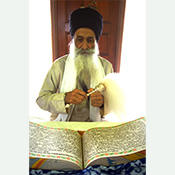
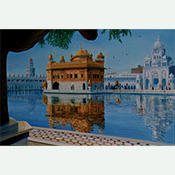
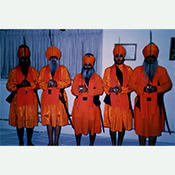
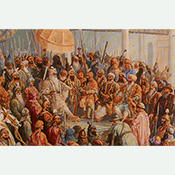
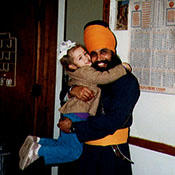
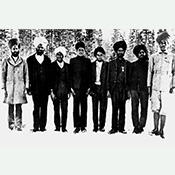
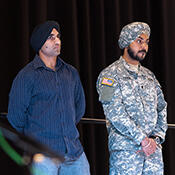 Since Anti-Asian sentiment was rampant in the American West, Sikhs were the victims of systematic discrimination. They were also targets of defamation and physical violence throughout the early 20th century....
Since Anti-Asian sentiment was rampant in the American West, Sikhs were the victims of systematic discrimination. They were also targets of defamation and physical violence throughout the early 20th century.... 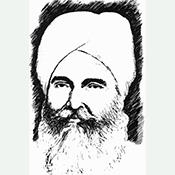
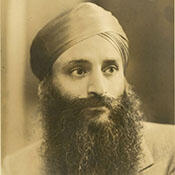 One of the major legislative tests of eligibility for citizenship was the case of Bhagat Singh Thind, a Punjabi who had come to the U.S. in 1913. He had been granted a certificate of naturalization but it was later contested. The case went to the U.S. Supreme Court, which ruled that Bhagat Singh Thind was not white and therefore his citizenship was revoked. As a result of the ruling, the Justice Department began proceedings to de-naturalize Sikhs who had already obtained citizenship. Since Sikhs were no longer considered citizens, they were not allowed to own land....
One of the major legislative tests of eligibility for citizenship was the case of Bhagat Singh Thind, a Punjabi who had come to the U.S. in 1913. He had been granted a certificate of naturalization but it was later contested. The case went to the U.S. Supreme Court, which ruled that Bhagat Singh Thind was not white and therefore his citizenship was revoked. As a result of the ruling, the Justice Department began proceedings to de-naturalize Sikhs who had already obtained citizenship. Since Sikhs were no longer considered citizens, they were not allowed to own land.... 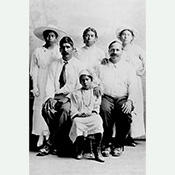
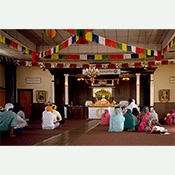
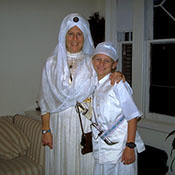

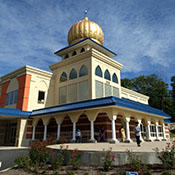
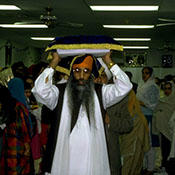
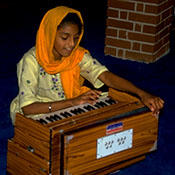
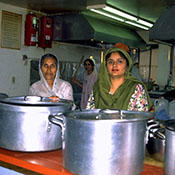
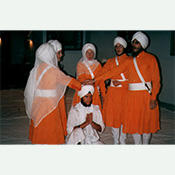


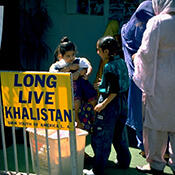 After the Indian army attacked the sacred Sikh Golden Temple and killed thousands of Sikhs in 1984, the call for an independent Sikh nation, Khalistan, gained significant traction in the Sikh community both in Punjab and abroad. A desire for independence has been present throughout Sikh history, but the events of 1984 brought the issue to the fore for many Sikhs. In gurdwaras throughout the United States, addressing the issues surrounding Khalistan is balanced with addressing the issues of how to maintain a Sikh community in the United States....
After the Indian army attacked the sacred Sikh Golden Temple and killed thousands of Sikhs in 1984, the call for an independent Sikh nation, Khalistan, gained significant traction in the Sikh community both in Punjab and abroad. A desire for independence has been present throughout Sikh history, but the events of 1984 brought the issue to the fore for many Sikhs. In gurdwaras throughout the United States, addressing the issues surrounding Khalistan is balanced with addressing the issues of how to maintain a Sikh community in the United States.... 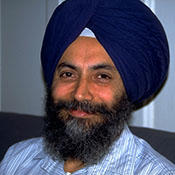
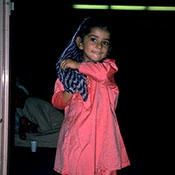
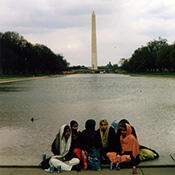 Following 9/11, there was an increase in hate crimes and discrimination against Sikhs across the United States, which led to the formation of national Sikh advocacy groups and organizations. More local initiatives seeking to educate the public about Sikhism and build relationships with non-Sikh community members also emerged....
Following 9/11, there was an increase in hate crimes and discrimination against Sikhs across the United States, which led to the formation of national Sikh advocacy groups and organizations. More local initiatives seeking to educate the public about Sikhism and build relationships with non-Sikh community members also emerged.... 